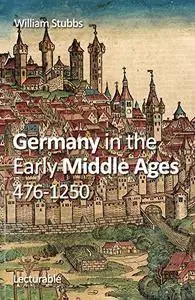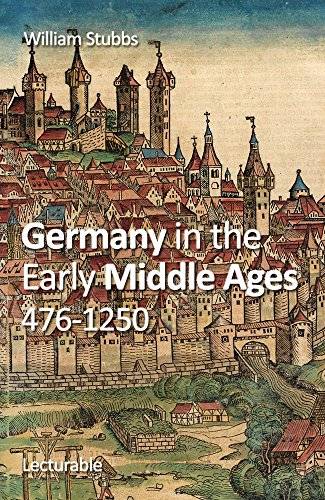William Stubbs, "Germany in the Early Middle Ages, 476-1250"
ASIN: B00MHNT9IW, ISBN: 1103081942 | 2014 | EPUB/MOBI | 271 pages | 378 KB/361 KB
"The Germany of modern history, the Germany of the Holy Roman Empire, lies partly within and partly without the general limits of the ancient or unholy Roman Empire. Taking as a rough limit the line of the Rhine and the Danube as the boundaries of the actual possessions of imperial Rome, it will be seen that all Germany east of the Rhine and north of the Danube remained practically unsubdued, or if partially subdued, unconsolidated. Great part of modern Germany lay outside the empire, and the part that lay inside it was counted to belong to provinces not in themselves radically German; the portion of Germany west of the Rhine was accounted a part of Gaul; and the German regions south of the Danube were for the most part regarded as Illyrian. The Germans of the heart of Germany had withstood successfully the attacks of Rome, although they had, it would seem almost of necessity, been leavened by her civilisation, and affected, after the adoption of Christianity in the empire, by the influences of her religion…" - William Stubbs
Contents - Germany at the opening of the Middle Ages - The Migrations - The Franks - The Alemanni - The Bavarians - The Saxons - Clovis - The Lombards - Neustria and Austrasia - Fall of the Merovingians - Charles Martel - The conversion of Germany - The reign of Pipin - The reign of Charles the Great - The Saxon Wars - Annexation of Bavaria - The Huns and the Avars - Charles the Great as Emperor - The year 800 - The division of the empire on his death - The birth of Charles the Bald - The division of Verdun, 843 - The reign of Lewis the German, 843-876 - Lotharingia - Arnulf king and emperor, 887-899, and his son Lewis, 900-911 - Otto of Saxony and Conrad of Franconia - The reign of Henry the Fowler - Hungarian wars - Otto I. - The first Civil War - Henry the Quarreller's conspiracy - The reorganisation of the Duchies - The second Civil War - Battle of Lechfeld - The Bohemians and Danes - Europe in the middle of the tenth century - Otto I. and the Papacy - Otto II., 973-983 - Otto III., 983-1000 - The year 1000. - Accession of Henry II. - His Wars with the Bohemians, Poles, and Flemish - Conrad the Salic, 1024-1039 - Conrad visits Italy - Coronation at Rome - Henry III., 1039-1056 - Henry III. and Otto III., their characters - The influence of Hildebrand - Henry III.'s European position - Accession of Henry IV. - His character - Quarrel with the Papacy - Growth of papal influence - The Saxon revolt - Canossa and after - War between Henry and Gregory VII. - Death of Gregory VII. - War in Germany - Revolt of Conrad - Character of Henry V. - The Concordat of Worms, 1122 - Election of Lothair II. - Papal schism - Lothair's relations with the Normans of Sicily - Henry the Proud - Election of Conrad III., 1138 - The Second Crusade - Death of Conrad III., 1152 - The accession of Frederick Barbarossa - Frederick's first and second expeditions to Italy - The diet at Roncaglia - Frederick's later expeditions to Italy - The Lombard League - Henry the Lion - His quarrel with Frederick - Downfall of Henry the Lion - His eastern expedition and death, 1190 - The reign of Henry VI., 1190-97 - The attempt to make the imperial dignity hereditary - Philip of Swabia crowned king - Otto of Saxony also crowned king as Otto IV. - Death of Philip, 1208 - Otto IV. emperor - Frederick II. crowned king, 1215 - The geographical and national divisions of Germany - The German dukedoms - Growth of the hereditary idea - Gradual extinction of the dukedoms.



